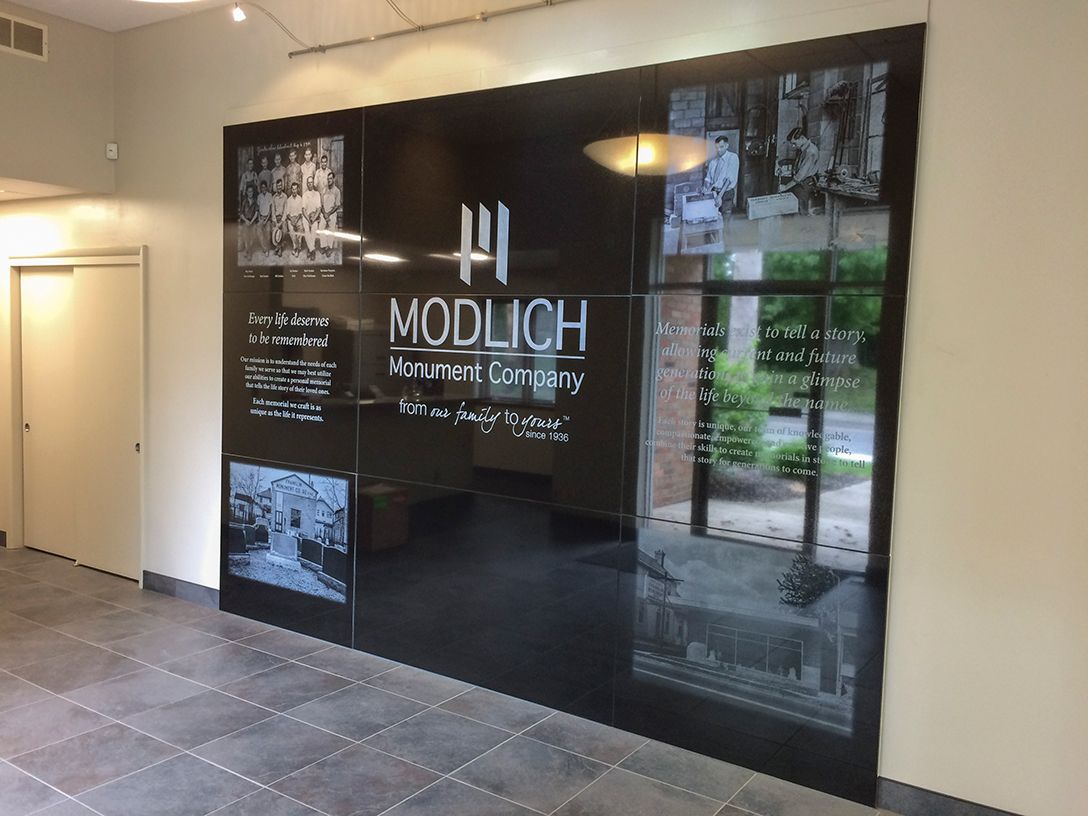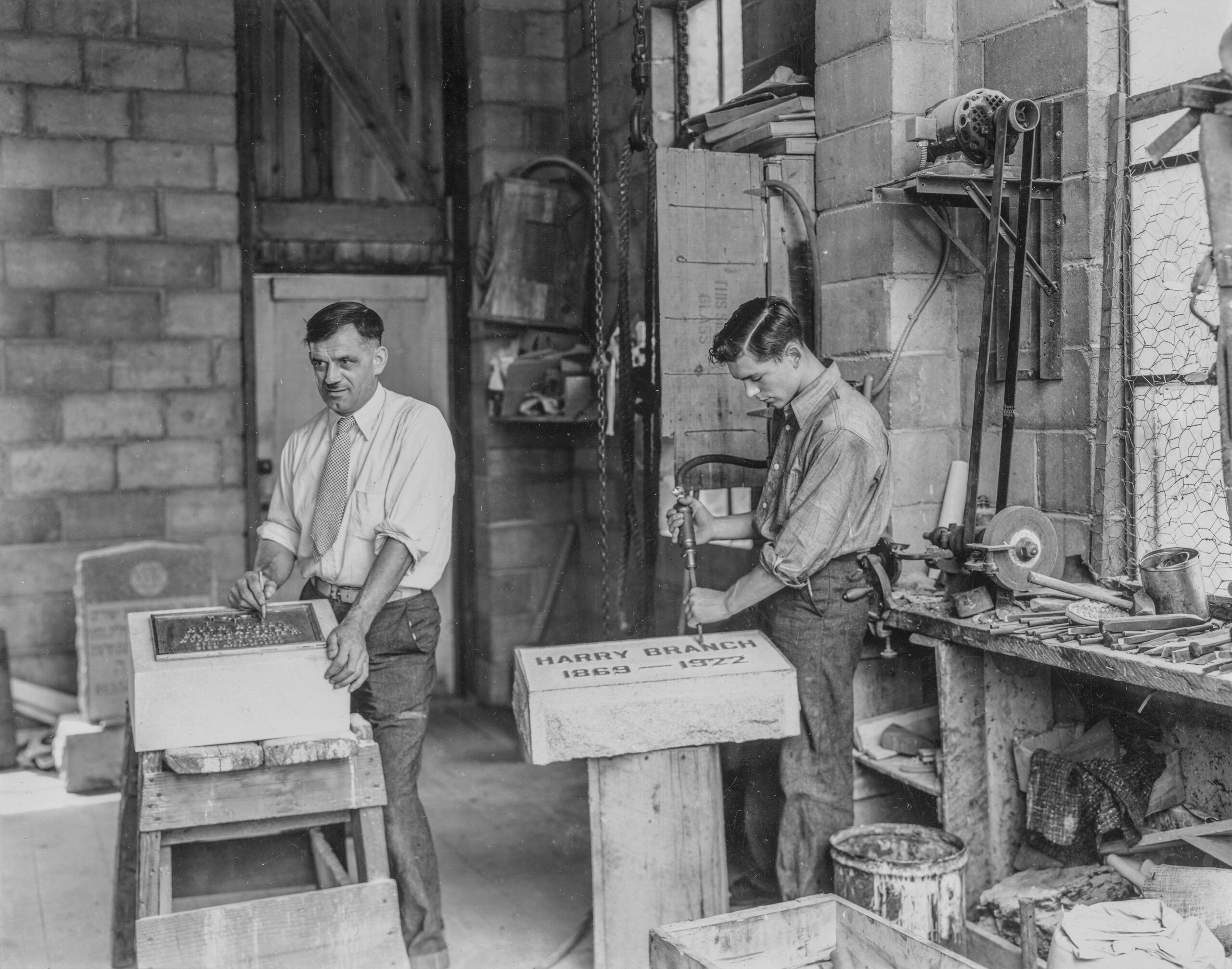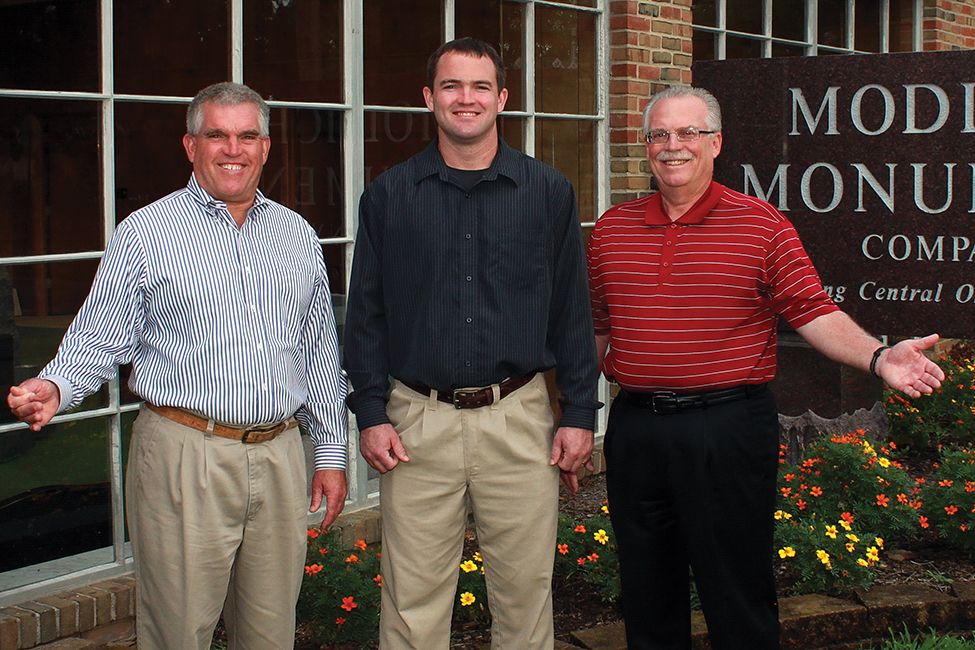Could anything evoke a greater sense of permanence than the phrase “carved in stone”?
A hammer and chisel are still part of a monument maker's toolkit. Yet monument building, like virtually every other industry, has changed over the years to incorporate technological advances. Modlich Monument Company of Columbus, Ohio, founded in 1936, discovered technology offered a route to diversification.
 A fruitless search for the right business software led the Modlich family to develop their own cloud-based solution, MB ProBuild. Their success with that system inspired them to create a new division of their company to market MB ProBuild to other monument makers.
A fruitless search for the right business software led the Modlich family to develop their own cloud-based solution, MB ProBuild. Their success with that system inspired them to create a new division of their company to market MB ProBuild to other monument makers.
Technology's biggest impact in the monument industry has been on the production side. Lasers, CAD and other advances have allowed new designs and textures that were once impossible to create by hand, such as etching a loved one's photo onto a tombstone.
But the industry lagged when it came to business software, especially for firms such as Modlich, which today has four locations and 15 employees, including four family members.
“The industry is generally technology-resistant,” says the firm's fourth-generation vice president, Jonathan Modlich, 39.
“Some individuals are very progressive and will jump on technology to run their business faster and more efficiently, and others will still type up invoices or even handwrite them,” says Jonathan, who serves on the board of an industry association.
John Modlich, the second-generation leader, invested in technology back in the 1970s.
“Dad certainly taught us that you had to differentiate yourself from your competitors. You can't do same things they were doing,” says John's son Dan Modlich, 64, secretary-treasurer of the company. “We were one of the first companies in the industry to purchase automated equipment for the production end of the business. He taught us that you have to adapt and look at ways to save money in a labor-intensive business, and that's kind of how we've looked at it. We learned by osmosis, I guess.”
MB ProBuild was created in 2009, after the Modlichs — Jonathan; his father, Dan; and his uncle Jerry, 66, the company president — found no suitable replacement for their outdated business software.
“We looked at two systems in particular, but both were a substantial investment and neither did all of what we needed, so we decided to create our own,” Jonathan says. That custom software system morphed into a new line of business.
MB ProBuild helps memorial businesses organize incoming orders, client information, invoices and other daily management information, and enables users to access that information from multiple sales locations.
On the cutting edge
Founder Linus Modlich, a skilled stonecutter, came to America from Germany in 1927 to work at a German-owned monument company in central Ohio. In 1936, at the height of the Great Depression, the owner could no longer afford to pay Linus enough. So Linus, who had owned a monument business in Germany, borrowed $1,000 from a relative and opened Franklin Monument Company, named after the county in which it was located.
 Initially, Linus worked alone, also doing sporadic work for other monument companies while his wife looked after the business. By 1939, his son John had begun working in the shop after school. After graduation, John worked full-time until he was called up to serve in World War II.
Initially, Linus worked alone, also doing sporadic work for other monument companies while his wife looked after the business. By 1939, his son John had begun working in the shop after school. After graduation, John worked full-time until he was called up to serve in World War II.
In 1946, John returned home to Columbus and began his career in earnest. Linus retired in 1964 and sold the company to John, who renamed it Modlich Monument Company.
“By then, everyone knew us. We have so many siblings that we were very well known in the area,” says Jerry. He and Dan are two of nine children.
John developed and expanded the company. All nine of his children worked at least part-time at the monument company at some point in their lives, usually after school. But John didn't want all his children to join the business permanently.
“My dad was pretty adamant about not getting too many people involved,” says Dan. John had seen family friends' building-products company fail after the owners died and their many children, who had inherited equal shares, squabbled over money.
“Dad decided early on that wasn't going to be the case in this business,” Dan says. “He didn't care which kid took it over but it was only going to be a couple [of the siblings], so whoever spoke up first got it. Jerry and I are the oldest, so we gravitated toward it, and that was it.”
MB ProBuild isn't the Modlichs' first attempt at diversification. In 1987, John, Dan and Jerry launched Modlich Stoneworks to sell granite and marble to the building industry.
“One of our younger brothers graduated from college just then, so we asked if he wanted to be involved. He did, and was put in charge. Another brother, and then another, joined. Jerry and I were owners, along with Dad because he put money in it,” Dan says.
But the Modlichs quickly discovered there were no synergies between the two businesses, and John, Dan and Jerry sold Modlich Stoneworks to the three younger brothers. It grew into a substantial business after that. Two of the three brothers still run it; the third left only recently to relocate with his wife. Though the companies have no financial connection, they help each other out when needed. Modlich Monuments rents space for its laser machines from Modlich Stoneworks.
 John retired in 1990 and sold Modlich Monuments to Jerry and Dan. Now 93, he still occasionally comes in to say hello.
John retired in 1990 and sold Modlich Monuments to Jerry and Dan. Now 93, he still occasionally comes in to say hello.
A new undertaking
After Jerry and Dan bought John out, they opened a second location. In the 2000s, through acquisition, the firm grew to six locations. Two of those have since closed.
Jerry, who managed the sales force, realized very quickly it was difficult to keep track of operations across all the locations. Creating a custom platform would be expensive, but existing software programs were expensive too, and trying to adapt them might not work.
Jonathan had studied computer science and engineering in college but lacked the experience to create a software system. Luckily, family came to the rescue. Jerry's son-in-law, Matt Scantland, is the co-founder and CEO of CoverMyMeds, which automates the process of exchanging patient health and medication information. CoverMyMeds built a custom system that did everything the Modlichs needed.
“Had there not been that family connection, we might have gone the route of adapting some Microsoft product to maybe do what we wanted it to do,” Dan says. “But because we trusted [Scantland's] employees, we decided to take the risk of creating something that does exactly what we wanted to do.”
It turned out the Modlichs weren't alone in their need for specialized software. “Around 2013 or 2014, a couple of people we knew in the monument industry asked how we organize all our paperwork and keep everything straight,” says Jonathan. “We showed them, and they said, ‘How can I get this?' That's when we realized we had something marketable to our industry and started selling it. We officially started MB ProBuild as a company in 2016.”
Although a competing system entered the market about a year and a half before MB ProBuild, the Modlichs continue to improve and update their software to win customers. MB ProBuild is cloud-based, so it's platform-agnostic, says Jonathan. Its other big advantage is that users can adapt the system to fit their business rather than being forced to change their business to fit the software.
MB ProBuild is still essentially a side project, a small part of the overall Modlich business; it's marginally profitable, Jonathan says. The company needed to invest in new software anyway, so any sales are a plus.
 The three principals run MB ProBuild as a team. Jerry, who retired from Modlich Monuments at the end of 2018, plans to increase his involvement with the software division. Dan hopes to retire from the monument company at the end of 2019, and he too plans to remain involved with MB ProBuild. Both Jerry and Dan focus on the sales end, while Jonathan concentrates on the technical side.
The three principals run MB ProBuild as a team. Jerry, who retired from Modlich Monuments at the end of 2018, plans to increase his involvement with the software division. Dan hopes to retire from the monument company at the end of 2019, and he too plans to remain involved with MB ProBuild. Both Jerry and Dan focus on the sales end, while Jonathan concentrates on the technical side.
After 50 years in the monument business, Jerry is looking forward to greater involvement with MB ProBuild. Although he claims he's not technically minded, he's the one who demonstrates the system to prospective customers.
“It's totally different from what I've done the rest of my career,” he says. “It's a lot fresher to me, interacting with other monument companies around the country. It's not something I ever did in running our own company; we didn't deal with other businesses, we competed against them.”
Plans for the future
The transition from the second to the third generation of Modlichs was smooth. John began transferring ownership to his sons long before he fully retired. Jerry and Dan started by buying a 48% interest in the business, split equally between them, while John retained a 52% stake. John and their mother, Helen, began wintering in Florida 10 years before his full retirement, leaving the two sons in charge for three to four months a year, although they talked to their father by phone frequently. In 1990, John retired completely and Jerry and Dan purchased the remainder of the business through a financing arrangement.
“When Dad retired, he retired,” says Dan. “He still would come in a few days a week for six or seven years, to clean up and do manual labor — mainly for something to do — but he relinquished control and didn't try to boss anyone around.”
Jerry and Dan have always held equal shares. Before Jerry retired, they each owned 48.75% and Jonathan owned the remaining 2.5%. Ownership will be transferred from the two G3s to Jonathan via the same kind of financing arrangement John used to transfer the business to his sons.
One additional family member currently works in the business: David Van Stone (his name is a happy coincidence), who is Dan's son-in-law and Jonathan's brother-in-law. Van Stone has been working closely with Jerry on the sales side for about two years and is taking over that part of the business upon Jerry's retirement. At present, he's an employee, and whether he eventually has an ownership stake will be up to Jonathan, say Dan and Jerry. Both hope that answer will be “yes.”
While many people may think the market for tombstones is eternal, the business is not immune to shifting trends, nor is it recession-proof. According to Dan, the “three Cs” — cremation, cemeteries and consolidation — have had a tremendous impact.
The increasing prevalence of cremations has resulted in decreased demand for monuments. New competition has come from cemeteries, which have entered the monument business. “That has impacted us unbelievably,” Dan says.
Consolidation has affected the entire funeral industry. Big conglomerates have bought up family-owned funeral homes and monument companies, although they sometimes have kept the public-facing name.
The Modlichs have been adamant about not selling. A competitor who had persistently offered to buy the family's business one day suggested that if they wouldn't sell, maybe they might like to buy. Jerry and Dan bought all of that firm's locations and closed some of them over time.
About the only thing that hasn't disrupted the industry much is e-commerce, largely because cemeteries don't let just anyone set a tombstone, and they don't want online competition. You can design and order a tombstone online, but without a way to install it you're stuck with an 1,800-pound granite slab in your driveway, says Jonathan.
He is grateful to be part of a family willing to adapt to a changing marketplace and take risks to succeed. “Just watching how we operate the monument company, we're always willing to take on risks to bring new capabilities or products to our customers,” Jonathan says. “The more time I've spent in this business, the more valuable I see that is, because companies that don't are not around anymore. Without some controlled risk, you don't have growth. Without growth, it's hard to survive.
“Jerry and Dan taught me that taking a risk on something is not only acceptable but encouraged, assuming there is some sort of path to making it worthwhile.”
Hedda Schupak is a business writer based in the Philadelphia area.
Copyright 2019 by Family Business Magazine. This article may not be posted online or reproduced in any form, including photocopy, without permission from the publisher. For reprint information, contact bwenger@familybusinessmagazine.com.

